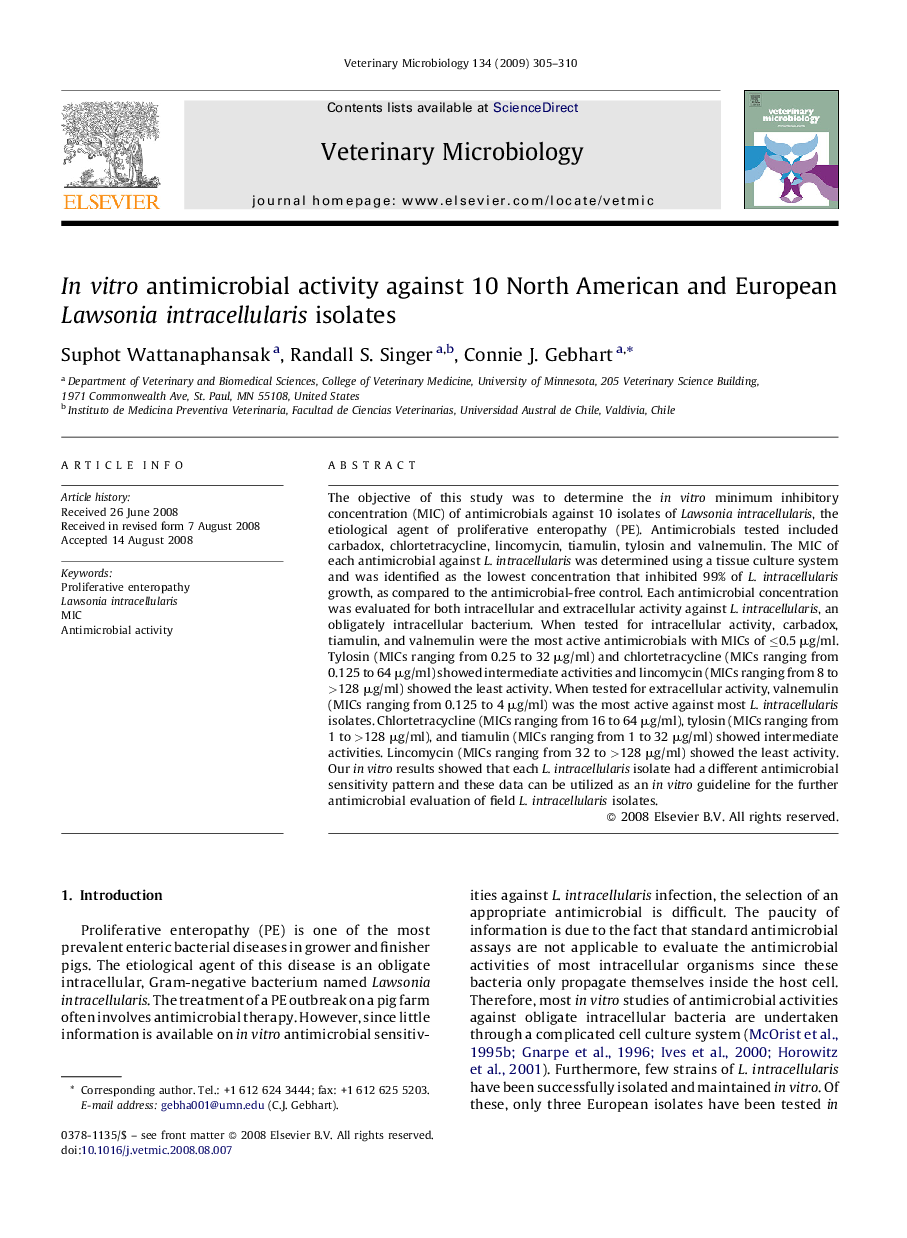| Article ID | Journal | Published Year | Pages | File Type |
|---|---|---|---|---|
| 2468262 | Veterinary Microbiology | 2009 | 6 Pages |
The objective of this study was to determine the in vitro minimum inhibitory concentration (MIC) of antimicrobials against 10 isolates of Lawsonia intracellularis, the etiological agent of proliferative enteropathy (PE). Antimicrobials tested included carbadox, chlortetracycline, lincomycin, tiamulin, tylosin and valnemulin. The MIC of each antimicrobial against L. intracellularis was determined using a tissue culture system and was identified as the lowest concentration that inhibited 99% of L. intracellularis growth, as compared to the antimicrobial-free control. Each antimicrobial concentration was evaluated for both intracellular and extracellular activity against L. intracellularis, an obligately intracellular bacterium. When tested for intracellular activity, carbadox, tiamulin, and valnemulin were the most active antimicrobials with MICs of ≤0.5 μg/ml. Tylosin (MICs ranging from 0.25 to 32 μg/ml) and chlortetracycline (MICs ranging from 0.125 to 64 μg/ml) showed intermediate activities and lincomycin (MICs ranging from 8 to >128 μg/ml) showed the least activity. When tested for extracellular activity, valnemulin (MICs ranging from 0.125 to 4 μg/ml) was the most active against most L. intracellularis isolates. Chlortetracycline (MICs ranging from 16 to 64 μg/ml), tylosin (MICs ranging from 1 to >128 μg/ml), and tiamulin (MICs ranging from 1 to 32 μg/ml) showed intermediate activities. Lincomycin (MICs ranging from 32 to >128 μg/ml) showed the least activity. Our in vitro results showed that each L. intracellularis isolate had a different antimicrobial sensitivity pattern and these data can be utilized as an in vitro guideline for the further antimicrobial evaluation of field L. intracellularis isolates.
